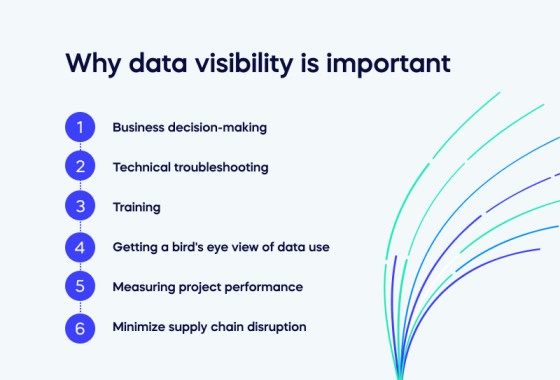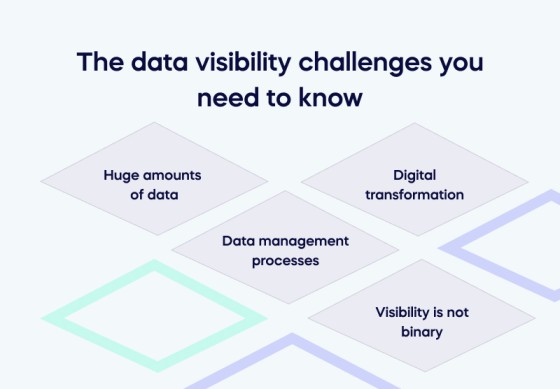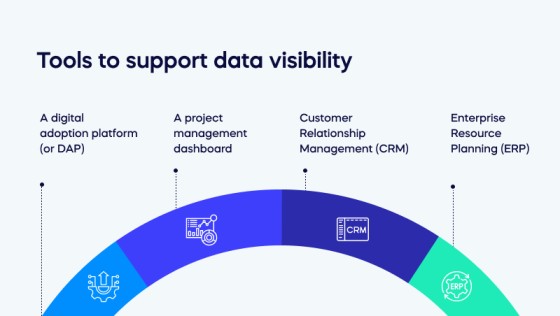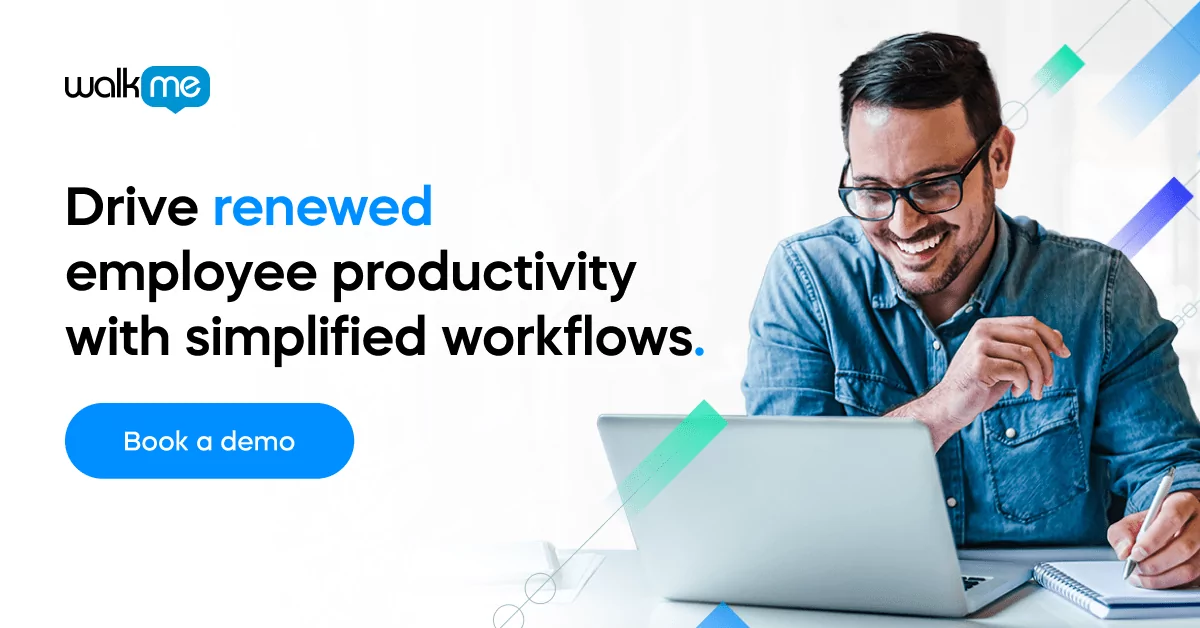Data visibility is a pretty new concept, but its logic is very old.
Data has been part of the workplace for hundreds of years. What time did your workers start? When do they finish? Who’s going on vacation? What about lunch breaks?
And today, employees generate data at a much higher rate than ever before. There are masses of software that are dedicated to tracking that data. And management teams know that they need to keep on top of every piece of data to make the best possible decisions for their companies.
But using all the data in a company is a real challenge: and that’s where the concept of data visibility comes in. It’s one key part of creating a data-driven culture. If you can’t see the data that your organization makes, you can’t use it. And you certainly can’t manage it properly!
That’s why we will take some time to fully explain the concept of data visibility.
Here’s what this article will do:
- It will define the concept of data visibility and indicate its uses;
- Then, it will explain the importance of data visibility to businesses, organizations, and supply chains;
- It will examine the key challenges of data visibility;
- Finally, we’ll suggest some software tools to improve data visibility.
Data visibility is a valuable part of your digital business toolkit. People who support data-driven methods will often talk about the four Vs.: volume, velocity, variety, and veracity.
Maybe it’s time we had a fifth “V” with “Visibility.”
What is Data visibilty?
If your organization has strong data visibility, you can access and view a wide variety of data in real-time. You have systems to identify, retrieve, and interpret relevant information. There will be little dark data (or knowledge you can’t see). Data visibility allows you to make informed decisions about resource allocation and project plans, even when they include information from disparate sources.
Although the principles of data visibility are old, the specific concept is relatively new. As you can see in this N-gram, interest in data visibility increased dramatically up to 2008. Although enthusiasm for data visibility has calmed since then, it is currently on the rise.
Some concepts related to data visibility include:
- Availability
- Transparency
- Comprehensibility
- Quality
- Privacy
- Sharing
- Auditing
- Integration
- Visualization.
None of these concepts are the same as visibility: but they will all support the effective implementation of data visibility processes.
Data visibility is important for any business with digital capabilities. However, it is especially valuable for larger organizations. After all, getting access to the data produced by authorized across different projects and sites in different ways. In complex systems, there are real risks for poor decision-making at a higher level.
Why data visibility is important

Getting clear and visible data takes time, money, and technology. So why is it worth the trouble? This section describes some top reasons to invest in data visibility – including decision-making, troubleshooting, and employee training.
Business decision-making
Data visibility enables organizations to make informed decisions based on accurate and up-to-date information. It provides insights into market trends, customer behavior, and operational performance, empowering organizations to strategize effectively and stay competitive.
Technical troubleshooting
By tracking and analyzing system performance, error logs, and user behavior data, organizations can pinpoint the root causes of technical problems, leading to quicker resolution and improved system reliability.
Training
Data visibility helps to get insights into learner progress, performance, and engagement. It allows trainers to identify areas where additional support or modifications are required, leading to targeted training interventions and improved learning outcomes.
Getting a bird’s eye view of data use
Good data visibility provides a holistic view of data use across an organization. It helps identify data redundancies, gaps, and areas of high usage, enabling organizations to streamline data management, optimize storage resources, and ensure data quality and compliance.
Measuring project performance
Data visibility allows organizations to track and measure project performance against established metrics and goals. It provides real-time visibility into project milestones, resource allocation, and budget utilization, facilitating project monitoring, course correction, and overall project success. Data visibility can give valuable insights into change management projects.
Minimize supply chain disruption
Michael Fleming and Peter Okebukola explain that “data visibility combined with strong data management can help reduce operational costs.” They show it can “optimize procurement planning, demand forecasting, and inventory management.” In a global supply chain, data visibility can potentially make dramatic (even life-changing) improvements to complex systems.
The data visibility challenges you need to know

Although we want to make this an optimistic post about the many benefits of data visibility, there’s a whole load of data visibility challenges, too. If you’re worried about data’s role in your organization, see if you can embrace these challenges before they become problems.
Huge amounts of data
Modern organizations create vast amounts of data. That’s a blessing and a curse. As Ryan Tandler commented in 2022, “Imagine the sheer volume of data your household devices produce daily, and then imagine how much your organization’s devices produce every hour.” You can easily see how data collection can spiral out of control, creating data that no one ever sees.
Data management processes
Data visibility is just one component of data lifecycle management. In other words, you can’t achieve visibility as a bolt-on extra – it has to be an integrated part of the data systems in your organization. Creation, storage, and disposal must all work together to create the necessary data solutions.
Digital transformation
Data-driven decision-making works great in systems that embrace root-and-branch digital transformation. If every aspect of company life is digital, there’s lots of data and many ways to connect it up, and it can give many benefits. When there are gaps and siloes, you might find data visibility hard to achieve.
Visibility is not binary
Sure, some data will be “visible.” Some will be “invisible.”
But a whole load of data is somewhere in the middle, or “quasi-visible.” As Christina Neumayer explains, visibility works on a spectrum: an entire section of “data that are not visible per se but can be made visible.”
At the start of a data management project, you may already have some areas in mind for monitoring and analysis. But if you realize there are things you want to know, you’ll need a skilled data manager to make it happen.
Tools to support data visibility

Data visibility is important in wider projects – digital transformation, data management, and decision-making. As such, no tools are dedicated specifically to “data visibility” (although DAPs come close). All the same, you will find that you can improve data visibility by implementing some (or all) of the following systems.
- A digital adoption platform (or DAP) helps users by providing on-screen guidance and interactive tutorials. A DAP generates data about software use that leaders can use.
- A project management dashboard visually consolidates and presents project-related data, providing real-time insights into project progress, milestones, and performance metrics. It enhances data visibility by allowing stakeholders to monitor project status, identify bottlenecks, and make informed decisions based on up-to-date information.
- Customer Relationship Management (CRM) software, like Salesforce, provides a central point for crucial company activity. A CRM centralizes customer data, interactions, and sales activities, improving data visibility across the customer lifecycle. It enables organizations to track customer interactions and manage sales pipelines.
- Internally, Enterprise Resource Planning (ERP) system integrates various business functions and data into a centralized platform, providing comprehensive visibility into organizational processes. It enables cross-functional data visibility by connecting departments like finance, HR, procurement, and production, facilitating data sharing, collaboration, and better decision-making.
These software tools enhance data visibility by providing user guidance, consolidating data, visualizing information, and centralizing data from different sources.
Conclusion: More data, better visibility, improved team performances
There’s no perfect example of data visibility in action – nor has any company ever achieved complete visibility around its processes.
But there are a million examples of leaders using appropriate project data to identify potential risks, develop effective strategies, and gain a competitive advantage. In short, when it’s used well, data helps better understand company activities and reduce waste resources.
Just to recap what we’ve discussed in this article.
- Good data visibility refers to a company’s ability to collect and interpret data;
- Data visibility brings benefits to decision-making, troubleshooting, and more;
- Implementing strong data visibility practices comes with challenges
- Software packages (including DAPs like WalkMe) can radically improve data visibility strategies.
Digital transformation brings challenge after challenge to IT leaders. But when you think about everything that data can teach us, it’s an unparalleled opportunity for project managers to understand your business processes. A project’s success could rely on data visibility: so don’t be afraid to invest heavily in this area of your digital transformation project.


